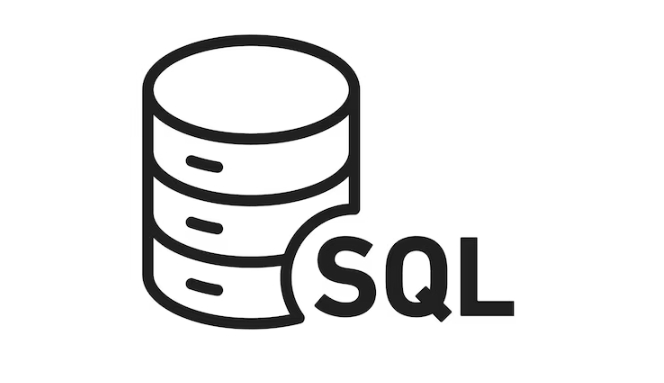The method of getting the current date and time in SQL varies from database system to database system, but is implemented through built-in functions. 1. MySQL uses NOW(), CURRENT_TIMESTAMP (including date and time), CURDATE() (date only), CURTIME() (time only); 2. PostgreSQL uses NOW() or CURRENT_TIMESTAMP (with time zone information), LOCALTIMESTAMP (without time zone); 3. SQL Server uses GETDATE() (local time), SYSDATETIME() (higher precision), GETUTCDATE() (UTC time); 4. Oracle Use SYSDATE (date and time), SYSTIMESTAMP (with exact timestamps for time zones), and output can be formatted via TO_CHAR. Pay attention to time zone processing and formatting when using it to avoid deviations.

Getting the current date and time in SQL is a common requirement, such as recording the data insertion time, doing time range filtering, etc. Different database systems support this function slightly differently, but it can basically be implemented.

Here are some common methods to get the current date and time in a database, as well as precautions when using it.

Get the current time in MySQL
MySQL provides several functions to get the current time:
-
NOW(): Returns the current date and time, the format isYYYY-MM-DD HH:MM:SS -
CURRENT_TIMESTAMP: The effect is similar toNOW() -
CURDATE(): Return only the date part -
CURTIME(): Return only the time part
Example:

SELECT NOW(); -- The output is similar to 2025-04-05 14:30:00
Tip:
NOW()is the most commonly used method, but if used in stored procedures, be careful that it will not change in the same transaction.
PostgreSQL Get the current time
The PostgreSQL method is also quite straightforward:
-
NOW(): Returns the complete date and time with time zone information -
CURRENT_TIMESTAMP: The same effect asNOW() - If you just want to get time without time zone, you can use
LOCALTIMESTAMP
Example:
SELECT NOW(); -- The output is similar to 2025-04-05 14:30:00.123456 08
Note: PostgreSQL timestamps will contain time zone information by default. If you need a specific format or time zone, you may also need to use it with
AT TIME ZONE.
SQL Server Gets the current time
There are two commonly used functions in SQL Server:
-
GETDATE(): Returns the current system time (local time) -
SYSDATETIME(): Higher precision, returns more millisecond digits -
GETUTCDATE(): Returns UTC time
Example:
SELECT GETDATE(); -- The output is similar to 2025-04-05 14:30:00.123
Difference: If your application spans multiple time zones, it is recommended to use
GETUTCDATE()to store unified time, and then convert it to the user's time zone when reading.
Get the current time in Oracle
Oracle uses slightly different syntax:
-
SYSDATE: Returns the current date and time of the database server -
SYSTIMESTAMP: Contains more precise timestamps, including time zones
Example:
SELECT SYSDATE FROM dual; -- Output similar to 05-APR-25
Note: Oracle's default display format may be relatively simple. If you need a complete time format, you can convert it with
TO_CHAR(SYSDATE, 'YYYY-MM-DD HH24:MI:SS').
Basically these are the methods. Although the syntax of each database system is different, the logic is similar, and the current time is obtained through built-in functions. Pay attention to time zone processing and formatting output when using it to avoid deviations.
The above is the detailed content of How to get the current date and time in SQL. For more information, please follow other related articles on the PHP Chinese website!

Hot AI Tools

Undress AI Tool
Undress images for free

Undresser.AI Undress
AI-powered app for creating realistic nude photos

AI Clothes Remover
Online AI tool for removing clothes from photos.

Clothoff.io
AI clothes remover

Video Face Swap
Swap faces in any video effortlessly with our completely free AI face swap tool!

Hot Article

Hot Tools

Notepad++7.3.1
Easy-to-use and free code editor

SublimeText3 Chinese version
Chinese version, very easy to use

Zend Studio 13.0.1
Powerful PHP integrated development environment

Dreamweaver CS6
Visual web development tools

SublimeText3 Mac version
God-level code editing software (SublimeText3)
 Defining Database Schemas with SQL CREATE TABLE Statements
Jul 05, 2025 am 01:55 AM
Defining Database Schemas with SQL CREATE TABLE Statements
Jul 05, 2025 am 01:55 AM
In database design, use the CREATETABLE statement to define table structures and constraints to ensure data integrity. 1. Each table needs to specify the field, data type and primary key, such as user_idINTPRIMARYKEY; 2. Add NOTNULL, UNIQUE, DEFAULT and other constraints to improve data consistency, such as emailVARCHAR(255)NOTNULLUNIQUE; 3. Use FOREIGNKEY to establish the relationship between tables, such as orders table references the primary key of the users table through user_id.
 Key Differences Between SQL Functions and Stored Procedures.
Jul 05, 2025 am 01:38 AM
Key Differences Between SQL Functions and Stored Procedures.
Jul 05, 2025 am 01:38 AM
SQLfunctionsandstoredproceduresdifferinpurpose,returnbehavior,callingcontext,andsecurity.1.Functionsreturnasinglevalueortableandareusedforcomputationswithinqueries,whileproceduresperformcomplexoperationsanddatamodifications.2.Functionsmustreturnavalu
 Using SQL LAG and LEAD functions for time-series analysis.
Jul 05, 2025 am 01:34 AM
Using SQL LAG and LEAD functions for time-series analysis.
Jul 05, 2025 am 01:34 AM
LAG and LEAD in SQL are window functions used to compare the current row with the previous row data. 1. LAG (column, offset, default) is used to obtain the data of the offset line before the current line. The default value is 1. If there is no previous line, the default is returned; 2. LEAD (column, offset, default) is used to obtain the subsequent line. They are often used in time series analysis, such as calculating sales changes, user behavior intervals, etc. For example, obtain the sales of the previous day through LAG (sales, 1, 0) and calculate the difference and growth rate; obtain the next visit time through LEAD (visit_date) and calculate the number of days between them in combination with DATEDIFF;
 How to create a user and grant permissions in SQL
Jul 05, 2025 am 01:51 AM
How to create a user and grant permissions in SQL
Jul 05, 2025 am 01:51 AM
Create a user using the CREATEUSER command, for example, MySQL: CREATEUSER'new_user'@'host'IDENTIFIEDBY'password'; PostgreSQL: CREATEUSERnew_userWITHPASSWORD'password'; 2. Grant permission to use the GRANT command, such as GRANTSELECTONdatabase_name.TO'new_user'@'host'; 3. Revoke permission to use the REVOKE command, such as REVOKEDELETEONdatabase_name.FROM'new_user
 How to find columns with a specific name in a SQL database?
Jul 07, 2025 am 02:08 AM
How to find columns with a specific name in a SQL database?
Jul 07, 2025 am 02:08 AM
To find columns with specific names in SQL databases, it can be achieved through system information schema or the database comes with its own metadata table. 1. Use INFORMATION_SCHEMA.COLUMNS query is suitable for most SQL databases, such as MySQL, PostgreSQL and SQLServer, and matches through SELECTTABLE_NAME, COLUMN_NAME and combined with WHERECOLUMN_NAMELIKE or =; 2. Specific databases can query system tables or views, such as SQLServer uses sys.columns to combine sys.tables for JOIN query, PostgreSQL can be used through inf
 What is the SQL LIKE Operator and How Do I Use It Effectively?
Jul 05, 2025 am 01:18 AM
What is the SQL LIKE Operator and How Do I Use It Effectively?
Jul 05, 2025 am 01:18 AM
TheSQLLIKEoperatorisusedforpatternmatchinginSQLqueries,allowingsearchesforspecifiedpatternsincolumns.Ituseswildcardslike'%'forzeroormorecharactersand'_'forasinglecharacter.Here'showtouseiteffectively:1)UseLIKEwithwildcardstofindpatterns,e.g.,'J%'forn
 How to backup and restore a SQL database
Jul 06, 2025 am 01:04 AM
How to backup and restore a SQL database
Jul 06, 2025 am 01:04 AM
Backing up and restoring SQL databases is a key operation to prevent data loss and system failure. 1. Use SSMS to visually back up the database, select complete and differential backup types and set a secure path; 2. Use T-SQL commands to achieve flexible backups, supporting automation and remote execution; 3. Recovering the database can be completed through SSMS or RESTOREDATABASE commands, and use WITHREPLACE and SINGLE_USER modes if necessary; 4. Pay attention to permission configuration, path access, avoid overwriting the production environment and verifying backup integrity. Mastering these methods can effectively ensure data security and business continuity.
 Explain the Distinction Between a SQL Schema and a Database.
Jul 05, 2025 am 01:31 AM
Explain the Distinction Between a SQL Schema and a Database.
Jul 05, 2025 am 01:31 AM
OK, please provide the article content that needs a summary.






